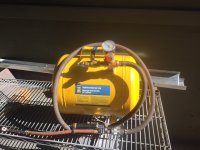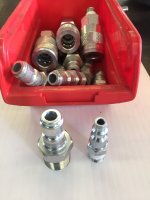I think the Manufacturers must base their their impact gun ratings on running two stage air compressor which is going to give you a lot more swat then your standard air compressor will.
Impact gun ratings have nothing to do with the type of compressor running them. The tests don't run long enough for the compressor's characteristics to matter at all. There's no time to deplete the tank, let alone see the effects of recovery time.
175 psi from a single stage is exactly the same as 175 psi from a two stage, rotary, or any other kind of compressor you can think up. The difference is in how long each type can sustain that pressure when there is demand, and how long it takes to recover once the tank is depleted to the point where the motor kicks on.
The torque rating is all about pressure and flow, which is governed by the pressure in the tank
and any restrictions between there and the gun. If you read the specifications carefully, you'll see that the torque rating is given at certain pressure. Since that pressure is specified in writing, they can't play with that number without risking problems with false advertising. But there is room to play with the flow characteristics. It would not surprise me if they pressurize a large tank to the stated pressure and run inch or inch and a half lines from that to the gun to give it unrealistically low restrictions.
It's probably like the numbers you see for log splitters. The math doesn't lie - a certain system pressure on a certain size piston will give a certain force. It's not debatable - it's basic arithmetic. But what they do is to state the force at maximum system pressure (usually 3500 psi), but they don't actually run at that pressure. They are usually well below that (typically 2500 psi).
If they are all following the same process, the numbers are valid for comparison, even if they aren't what you'll get in the real world.

